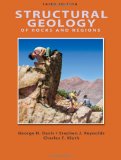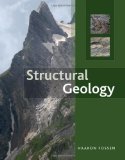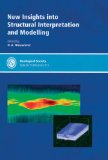Structural geology
- 3-D visualization of structural field data: examples from the Archean Caopatina Formation, Abitibi greenstone belt, Quebec, Canada

- Attribute-Assisted Automatic Fault Extraction - A Case Study in a Tectonically Complex Area Offshore East Coast of Canada

- British Geological Survey scheme for classifying discontinuities and fillings

- Derivation of the Area Balance Relations of Detachment Folds From First Principles

- Earth Structure - An Introduction to Structural Geology and Tectonics
- EQ Causes and Measurements
- Evaluating the quality of bed length and area balance in 2D structural restorations

- Evolution of large normal faults: Evidence from seismic reflection data

- Examining fault architecture and strain distribution using geospatial and geomechanical modelling: An example from the Qaidam basin, NE Tibet

- Fault Analysis Group - semi-autonomous research group within the Department of Geology at University College Dublin. The function of the FAG is to carry out basic scientific research on all aspects of faults and other types of fracture and to apply the results to practical problems, principally in the field of hydrocarbon reservoir characterisation and modelling.
- Fault architecture of reactivated faults in Carboniferous sediments, Northumberland, Great Britain

- Fault architecture in extensional faults affecting sandstone, Northumberland, Great Britain

- Fault facies modelling: 3D representation of faults in petroleum resevoirs

- Fault zone modelling: A hierarchical approach for numerical modelling of fault structures, upscaling and flow simulation

- Fluid Transport Properties of Faults
- Fold (geology)

- Fold-accommodation faults

- Folds
- Folds and Faults
- Folds, Faults
- Fracture Characterization: From Core to Discrete Fracture Network Model

- Fundamentals of Structural Geology
- Geological Society of America - Structural Geology & Tectonics Division
- Glossary of Structural Geology and Tectonics

- Improving 2D seismic interpretation in challenging settings by integration of restoration techniques: A case study from the Jura fold-and-thrust belt (Switzerland)

- Introduction to Structural Geology

- Keck Geology Consortium Structural Geology Slide Set
- Magnitude vs. Distance Plot – A Tool for Fault Reactivation Identification

- Microstructures Online
- Open Plot Project: an open-source toolkit for 3-D structural data analysis

- Orientation of faults and their potential for reactivation in the present stress field in Finland

- Quantification of fault zone features in siliciclastic rocks: Implications for 3D fault modelling and fluid flow

- Reviewing the Basics
- Rod Holcombe Structural Geology Animation Library
- San Andreas Fault
- San Andreas Fault Field Trip
- Satellite Based Observations on the Deformation Pattern in Parts of Delhi Fold Belt, Jaipur, Rajasthan

- Scaled analogue models of normal faulting in brittle lithologies

- Seismic data conditioning and neural network-based attribute selection for enhanced fault detection

- Southern California Faults
- Stratigraphic and Structural Evidence for Fault Reactivation: The Active Manisa Fault Zone, Western Anatolia

- Structural Geology
- Structural Geology

- Structural geology

- Structural Geology, Tectonics and Geomechanics, Geological Institute, RWTH Aachen University

- Structural Geology and Tectonics
- Structural Geology Blog
- Structural Geology Techniques
- Structural interpretation and structural modelling of carbonate and clastic reservoir analogue, Lovehovden, northern Billefjjord, Svalbard

- Structure of Rock Bodies

- Synchronous development of Type 2 and Type 3 fold interference patterns: evidence for recumbent sheath folds in the Allendale Area, Broken Hill, NSW, Australia

- Teaching Resources in Structural Geology
- Tectonic deformation and fault interaction in porous siliciclastic rocks, with particular emphasis on relay ramps - Implications for fluid flow and reservoir performance

- Three Elements of Structural Geology

- Three-dimensional analysis of syndepositional faulting and synkinematic sedimentation, Niger Delta, Nigeria

- UNB GEOLOGY 1001 Lecture 12 - Deformation and Structures
- Using differential geometry to describe 3-D folds

Universities
- Basel University - Rock deformation & microstructure
- California University Davis - Structural Geology and Tectonics
- Imperial College London - Structural Geology and Rock Mechanics
- Michigan University - Tectonics and Structural Geology
- Montana State University - Structural Geology Lab
- New Mexico Tech - Structural Geology
- Washington University - Structural Geology, Tectonics & Geodynamics
- Wooster College - Structural Geology (Geology 313)
Books about structural geology





